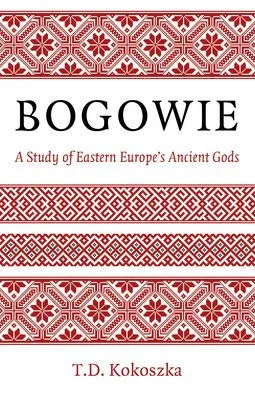To begin with, the author holds a B.S. in microbiology, not a specialized degree in anthropology, linguistics, religious studies, or related fields. But he acknowledges his lack of specialized expertise and defends his decision to use a comparative “history of religions” approach as well as other scholarly decisions very effectively. I am satisfied that this is a book to be taken seriously as a starting place in understanding the subject. I am very pleased and impressed that he does not rely on UPG (Unverifiable Personal Gnosis) and there is no pure invention here, an excellent foundation in scholarship that is rare in this genre of publishing. I like footnotes, he has footnotes.
He uses literary sources in folk story which he goes into in depth, clearly demonstrating mythological depth and age of these stories, a wide range of academic sources although principally Russian and other Slavic ones including newer post-Soviet scholarship, throws a wide net but does a very good job of supporting his choices in this, not merely ‘random dot-connecting’ (36). He likes James Frazer and Mircea Eliade more than I do, Marija Gimbutas, but generally his sources are sound and people that you would expect in a serious discussion – Bruce Lincoln, George Dumezil, Wendy Doniger, Catharina Raudvere, Jonas Trinkunas. Some of the newer scholarship is comparisons with Ossetian culture (northern Caucasus) and Mordvin culture (mid-Volga region).
He's aware that this is going to be a starting place for study, and he has modest goals, but he covers a good range of deities with a decent amount of detail. Well-constructed, well-reasoned, and clear and accessible writing, with chapters on The Ancient Origins of Europe up to the Early Slavs, Baba Yaga and Mokosh the Great Mother, Perun and the Drakenkampf (Dragon slayer motif), Untangling the Beard of Volos, The Zoryas as Sea Maidens, Advanced Concepts in Indo-European Mythology, Deus Otiosus (the deity as underlying ‘primal cause’, inaccessible), Svarozhichi - Sons of Svarog, Death and the Soul in Slavic Paganism, Magical Traditions in Eastern Europe (a much shorter and less developed chapter), Chernobog and the Earth-diver Myth (on dualism in Slavic mythology and religion), Vaguely but Firmly Attested Deities (short sketches of minor deities), Slavic Holidays (another very short and less developed chapter – he has a lot less interest in ritual than I do), and a fine chapter of Closing Statements.
To his credit he addresses head on the concerns about scholarship, the equation of identity with one’s ancestors’ traditions with White nationalist racism, and effectively examines issues that have made the specialists’ scholarship weaker – for example Russians who do not examine survival of ancient religion in Ukraine and the possibility that the Slavic religious heartland might have been there.
To conclude – I was sent a PDF of this book to review but I like it so much I’m ordering a print copy for my library and one more for my friend who’s really interested in exploring her Slavic heritage.
~review by Samuel Wagar
Author: Troy David Kokoszka
Moon Books, 2023
448 pg. £26.99 || $34.95 (US dollars

